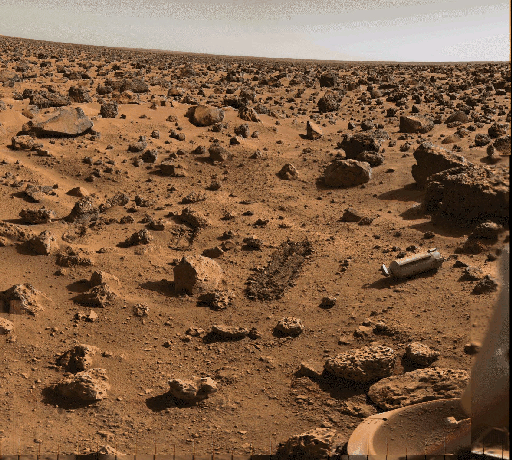Astronomy Picture of the Day
Discover the cosmos!
Each day a different image or photograph of our fascinating universe is
featured, along with a brief explanation written by a professional
astronomer.
July 22, 1996

Utopia on Mars
Credit:
The Viking Project,
M. Dale-Bannister WU StL,
NASA
Explanation:
The Viking 2 spacecraft was launched
on the Road to Utopia in September of
1975 (30 years after Bing, Dotty, and Bob).
In August of 1976, after making the second successful Martian landing,
Viking 2's lander began recording data used to produce
this exquisitely detailed image of
the Martian surface
in the area of Utopia Planitia (the Plain of Utopia).
Visible at the lower right are the protective shroud that covered the
lander's soil collector head, ejected after the descent,
along with one of the lander's dust covered footpads.
Seen near the center are shallow trenches dug by
the sampler arm.
Mars looks red because its surface is covered
with reddish iron oxide dust (rust). This dust, suspended in
the thin carbon dioxide atmosphere, also filters the sunlight causing
surface views to take on a reddish tinge.
The Vikings made the first successful landings on
Mars 20 years ago.
What does Mars look like today?
Tomorrow's picture: Hale-Bopp, Jupiter, and the MilkyWay
| Archive
| Index
| Search
| Glossary
| Education
| About APOD |




Authors & editors:
Robert Nemiroff
(MTU) &
Jerry
Bonnell (USRA).
NASA Technical Rep.:
Sherri
Calvo.
Specific rights apply.
A service of:
LHEA
at
NASA/
GSFC




